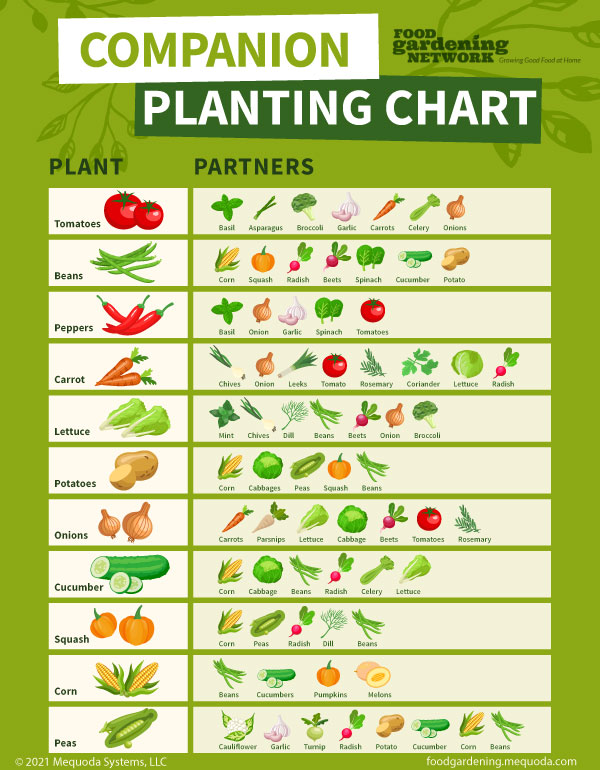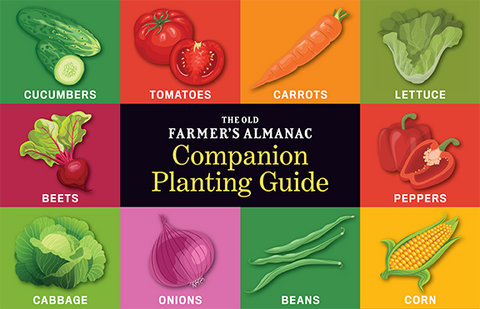The Ultimate Guide To Squash Companion Planting
Squash is a delicious and versatile vegetable that can be enjoyed in many different dishes. But did you know that companion planting can help you grow healthier and more productive squash plants?
Companion planting is the practice of planting certain types of plants together for their mutual benefit. Some plants help to attract beneficial insects, while others help to repel pests. Some plants improve the soil quality, while others help to suppress weeds.
When it comes to squash, there are a few key companion plants that can help you to grow the best possible crop.
The Three Sisters
One of the most well-known companion planting combinations for squash is the Three Sisters. This method involves planting corn, beans, and squash together. The corn provides a trellis for the beans to climb, the beans fix nitrogen in the soil, and the squash shades the ground, helping to suppress weeds.
Other Beneficial Companion Plants
In addition to the Three Sisters, there are a number of other companion plants that can benefit squash plants. These include:
- Borage: Borage attracts beneficial insects, such as ladybugs and lacewings, which help to control pests. It also helps to repel squash bugs.
- Cosmos: Cosmos attracts beneficial insects and helps to suppress weeds.
- Dill: Dill attracts beneficial insects and helps to repel pests. It also helps to improve the flavor of squash.
- Nasturtiums: Nasturtiums attract beneficial insects and help to repel pests. They also help to deter rabbits and deer.
- Peas: Peas fix nitrogen in the soil, which benefits squash plants.
- Radishes: Radishes deter squash vine borers.
- Sunflowers: Sunflowers attract beneficial insects and help to suppress weeds.
What to Avoid
There are also a few plants that should not be planted near squash plants. These include:
- Brassicas: Brassicas, such as broccoli, cabbage, and cauliflower, can attract pests that also attack squash plants.
- Potatoes: Potatoes can harbor a disease called verticillium wilt, which can also infect squash plants.
How to Plant Companion Plants
When planting companion plants with squash, it is important to consider the spacing requirements of each plant. For example, corn needs more space than squash, so you will need to plant them further apart.
It is also important to plant companion plants at the same time as squash plants. This will help to ensure that they all get off to a good start.
Conclusion
Companion planting is a great way to improve the health and productivity of your squash plants. By planting the right companion plants together, you can attract beneficial insects, repel pests, improve the soil quality, and suppress weeds.
So next time you are planting squash, be sure to consider companion planting. You may be surprised at how much it can help your plants thrive.
Squash is a delicious and versatile vegetable that can be enjoyed in many different ways. But did you know that there are certain plants that can help your squash grow better? Companion planting is the practice of planting certain plants together to benefit each other. For example, some plants attract beneficial insects that help to control pests, while others help to improve the soil quality.
If you're looking to improve your squash harvest, I recommend checking out the Gardenia Inspiration companion planting chart. This chart lists all of the best and worst companion plants for squash, so you can be sure to plant your squash in the right place.
In addition to the companion planting chart, the website also has a wealth of other information about growing squash, including tips on planting, watering, and harvesting. So whether you're a beginner or a seasoned gardener, I encourage you to check out the website for more information.
FAQ of squash companion planting chart
Q: What are the benefits of companion planting with squash?
A: There are many benefits to companion planting with squash. Some of the most common benefits include:
- Disease and pest control: Companion plants can help to deter pests and diseases from attacking your squash plants. For example, nasturtiums are known to repel squash bugs, and marigolds can help to prevent powdery mildew.
- Improved pollination: Some companion plants, such as bee balm and borage, can attract pollinators to your garden, which will help to improve the pollination of your squash plants.
- Enhanced nutrient availability: Some companion plants, such as beans and peas, can help to fix nitrogen in the soil, which can benefit your squash plants.
- Reduced competition: Companion planting can help to reduce competition between plants for water, nutrients, and sunlight. This can lead to healthier and more productive plants.
Q: What are some good companion plants for squash?
A: Some good companion plants for squash include:
- Beans: Beans fix nitrogen in the soil, which can benefit your squash plants.
- Carrots: Carrots can help to repel nematodes, which can be a problem for squash plants.
- Cucumbers: Cucumbers can help to attract pollinators, which can improve the pollination of your squash plants.
- Marigolds: Marigolds can help to prevent powdery mildew, which can be a problem for squash plants.
- Nasturtiums: Nasturtiums can help to repel squash bugs, which can be a serious pest for squash plants.
Q: What are some bad companion plants for squash?
A: Some bad companion plants for squash include:
- Potatoes: Potatoes can attract the same pests as squash, so it's best to avoid planting them together.
- Pumpkins: Pumpkins can compete with squash for water and nutrients, so it's best to avoid planting them together.
- Tomatoes: Tomatoes can attract the same pests as squash, so it's best to avoid planting them together.
- Watermelons: Watermelons can compete with squash for water and nutrients, so it's best to avoid planting them together.
Q: How do I use a squash companion planting chart?
A: A squash companion planting chart can help you to choose the best companion plants for your squash plants. The chart will show you which plants are compatible with squash and which plants should be avoided. You can use the chart to plan your garden layout and to ensure that your squash plants are surrounded by their best friends.
Q: Where can I find a squash companion planting chart?
A: There are many different squash companion planting charts available online and in gardening books. You can also find charts at your local garden center.
Image of squash companion planting chart
- Image 1: This image shows a simple companion planting chart for squash. It shows which vegetables are good to plant near squash, which vegetables should be avoided, and which plants can be used as a border.
- Image 2: This image is a more detailed companion planting chart for squash. It shows the benefits of planting different vegetables near squash, as well as the potential problems that can occur if certain vegetables are planted together.
- Image 3: This image is a visual companion planting chart for squash. It shows different vegetables that can be planted together in a single bed, as well as the spacing between each plant.

- Image 4: This image is a printable companion planting chart for squash. It can be downloaded and printed out to use as a reference when planting squash in your garden.

- Image 5: This image is a poster of a companion planting chart for squash. It is a large and colorful poster that can be hung in your garden to remind you which vegetables to plant together.

Post a Comment for "The Ultimate Guide To Squash Companion Planting"